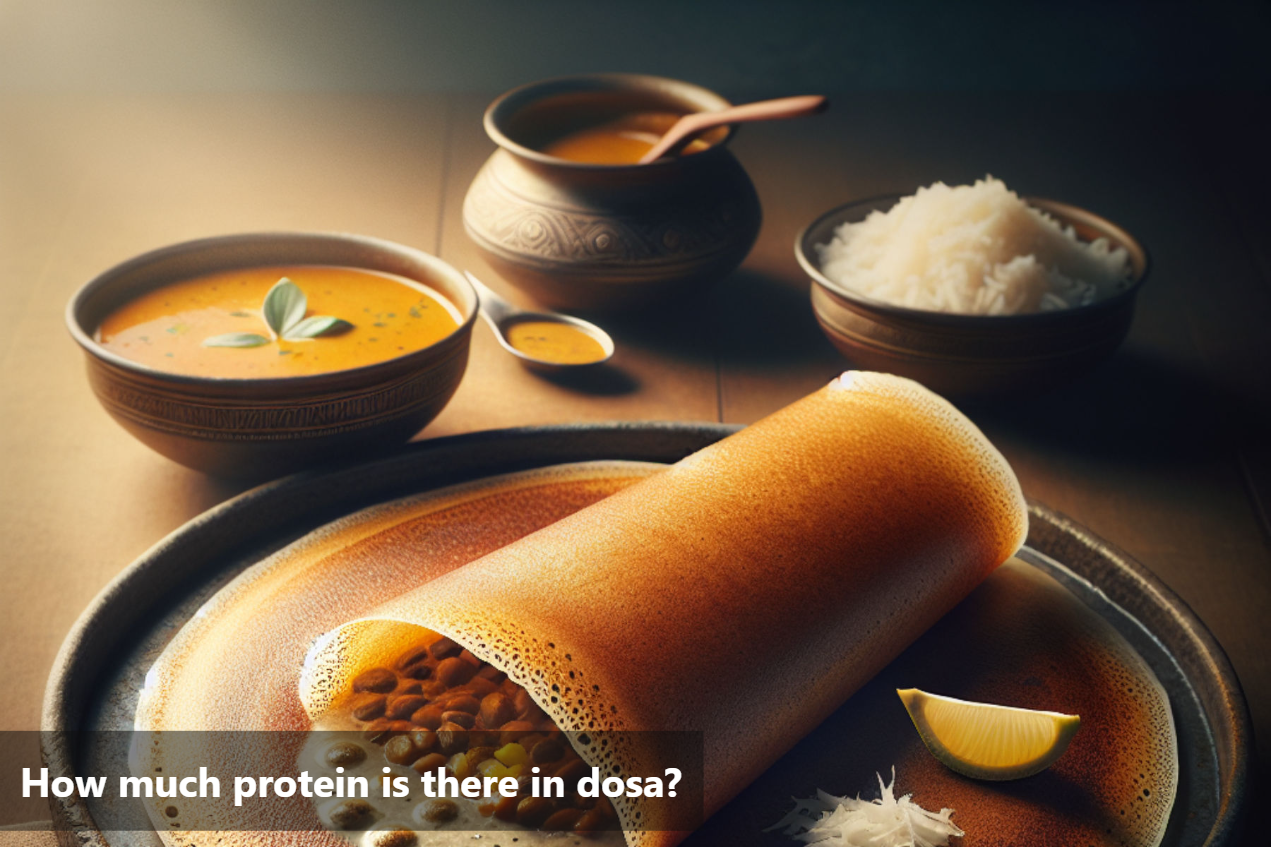
How much protein is there in dosa?
Dosa, a staple in South Indian cuisine, is a popular and versatile dish enjoyed across the globe. Made from fermented rice and lentil batter, dosa is not only flavorful but also packs a nutritional punch. One of the key components that makes dosa a beneficial addition to your diet is its protein content.
If you're wondering how much protein is present in one dosa, it can range from 2 to 5 grams, depending on the size and thickness of the dosa. While dosa alone may not provide your daily protein requirements, it can be enhanced by pairing it with protein-rich accompaniments like chutneys, sambar, or a side of lentil curry.
Incorporating dosa into your diet can be a flavorful way to increase your protein intake while indulging in a beloved dish. Whether enjoyed for breakfast, lunch, or dinner, dosa offers a delicious way to include protein in your daily meals.

Nutritional Composition of Dosa
One Medium Dosa |
Nutritional Facts |
Calories in Dosa |
168 |
Carbs |
29 grams |
Protein |
3.9 grams |
Fat |
3.7 grams |
Fibre |
0.9 grams |
Sodium |
94 mg |
Potassium |
76 mg |
Cholesterol |
0 mg |
Vitamins |
|
Dosa at home- simple steps
Ingredients:
Rice: 1 cup
Urad dal (split black gram): 1/2 cup
Fenugreek seeds: 1/2 teaspoon
Salt: to taste
Water: as needed
Oil or ghee: for cooking
Recipe:
-
Soaking:
Rinse rice and urad dal separately.
Soak rice, urad dal, and fenugreek seeds in water for 4-6 hours.
-
Grinding:
Drain water and grind rice, urad dal, and fenugreek seeds to a smooth batter using water as needed.
Combine both batters in a large bowl.
-
Fermentation:
Add salt to the batter and mix well.
Allow the batter to ferment overnight or for at least 8 hours.
-
Making Dosa:
Heat a non-stick or cast-iron skillet over medium heat.
Pour a ladleful of batter onto the center of the skillet.
Spread the batter in a circular motion to form a thin dosa.
Drizzle oil or ghee around the edges.
Cook until the bottom turns golden brown and crispy.
Fold the dosa and remove it from the skillet.
-
Serve:
Serve hot with coconut chutney, sambar, or potato masala.
Tips for Increasing Protein in Dosa
Incorporating high-protein ingredients into your dosa batter can enhance not only its nutritional value but also its taste.
One way to increase the protein content in your dosa is to add a variety of lentils to the batter. Lentils such as urad dal and moong dal are rich sources of protein, which can complement the traditional rice batter perfectly. You can experiment with different ratios of rice to lentils to find the right balance of texture and protein content in your dosa.
Another tip for boosting the protein in your dosa is to consider using alternative flours like chickpea flour or quinoa flour in combination with traditional rice flour. These substitutions can significantly increase the overall protein content of your dosa while adding a unique flavor profile to the dish.
To serve your dosa with protein-rich accompaniments, consider pairing it with a side of coconut chutney made with added roasted chana dal or peanuts. This will not only enhance the protein content of your meal but also add a delightful crunch and flavor contrast to the dosa.
Experimenting with these high-protein ingredients and accompaniments can elevate your dosa experience while ensuring that you consume a balanced and protein-rich meal.

Protein in Dosa: What You Need to Know
Dosa typically contains around 2-3 grams of protein per serving, depending on the recipe and size of the dosa. The combination of rice and lentils in dosa batter provides a balanced amino acid profile, making it a valuable protein source for vegetarians.
Including dosa in your diet can contribute to meeting your daily protein requirements, especially when paired with other protein-rich foods. Additionally, the fermentation process involved in dosa preparation increases the bioavailability of nutrients, including protein.
Incorporating dosa into your meal plan allows for a versatile and tasty way to boost your protein intake. By exploring different dosa recipes and fillings, you can customize your dosa to suit your nutritional needs.
FAQs
-
What is the protein content in a typical dosa?
A standard dosa typically contains around 3-4 grams of protein.
-
Is dosa a good source of protein?
While dosa is a popular and nutritious dish, it is not considered a high-protein food.
-
How can I increase the protein content of dosa?
You can increase the protein content of dosa by adding ingredients like lentils, chickpea flour, or tofu to the batter.
-
Are there any alternatives to traditional dosa that are higher in protein?
Yes, you can try making adai dosa, which is made with a combination of lentils and rice, resulting in a higher protein content.
-
Can dosa be a part of a balanced high-protein diet?
While dosa alone may not provide a significant amount of protein, it can be included in a balanced diet along with other protein-rich foods to meet your daily protein requirements.
This Blog post is an initiative by Lo! Foods, to provide accurate and Nutritionist / Doctor approved information related to Health. Lo! Foods is India's leading brand for Everyday Functional Foods. Foods designed for specific Health conditions or Needs. Lo! Foods also runs India's largest range of Low Carb Healthy Cloud Kitchens, under the brand names of Lo!, ProteinChef, ATH (All Things Healthy) and DiabeSmart.



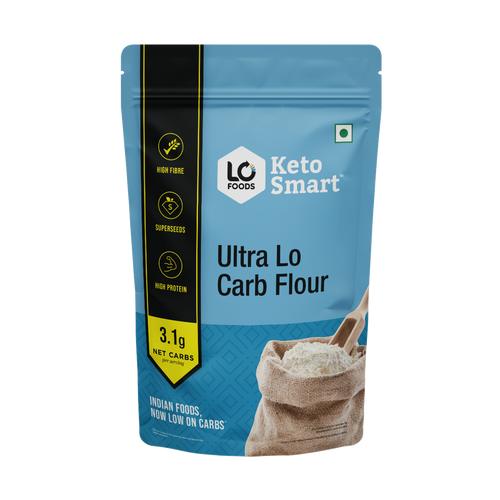
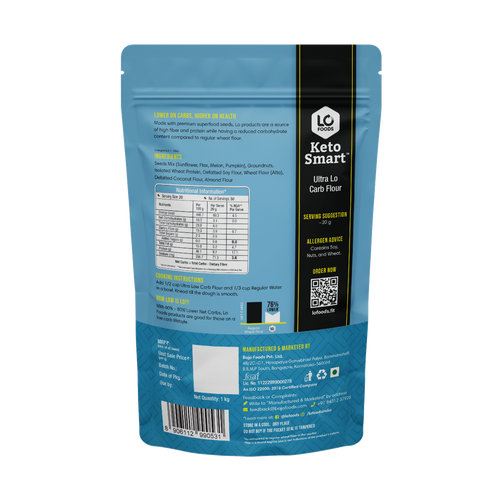
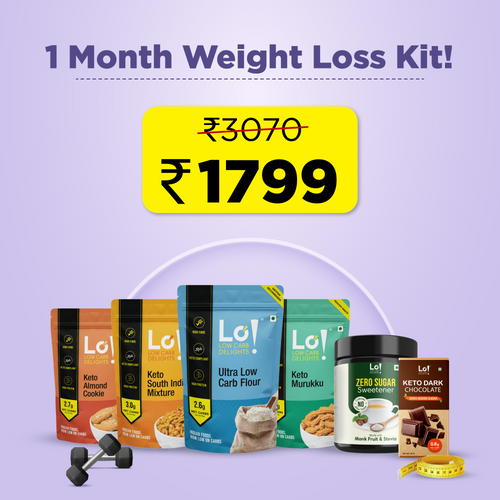
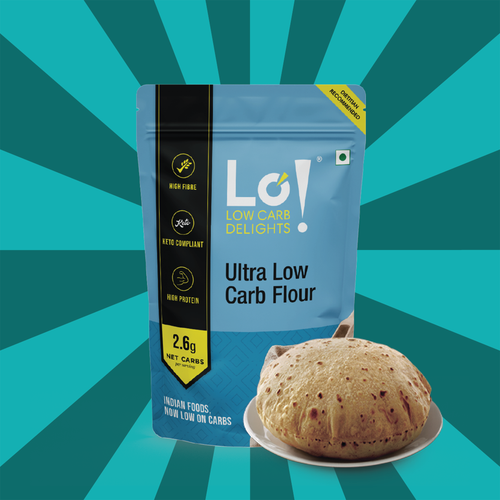


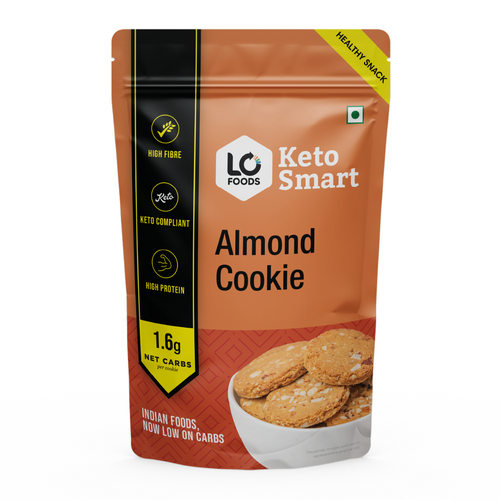
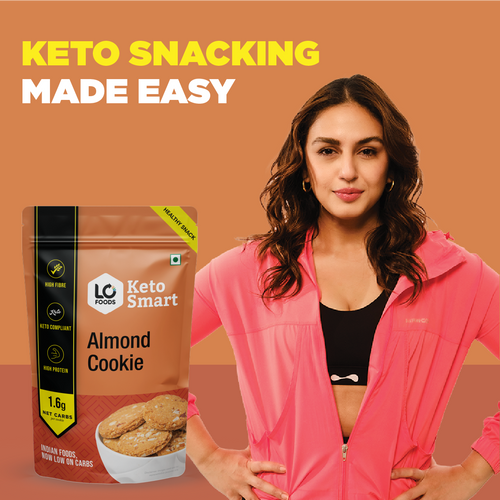




Leave a comment
Your email address will not be published.